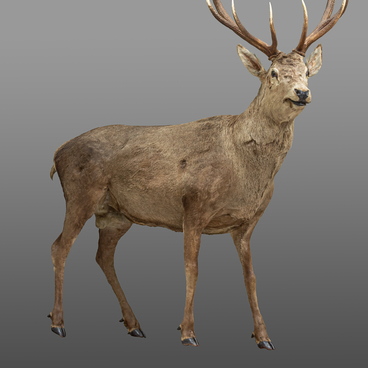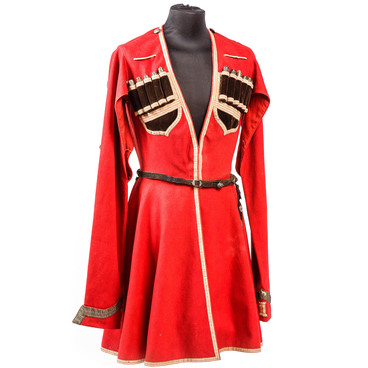A ‘naseka’ was a decorated staff or stick with a metal — usually, silver — pommel, which served as a symbol of the Cossack ataman power. Each village or kuren (unit of Zaporozhian Cossack Host) had a staff like this.
The 1897 edition of the Brockhaus and Efron dictionary explains the meaning of the word ‘naseka’ as follows, ‘A special badge of dignity in the Cossack troops, given by the Imperial Court on May 10, 1885, by the regulations of the Committee of Ministers to the of settlement and village atamans.’
There are two variants of where the name of the staff came from. Both of them are connected with the word ‘naseka’ (cutting): according to one version, the names of atamans were carved on the staff; according to the other version, the time of their rule was marked with notches. A ‘naseka’, along with other Cossack regalia, was usually housed in the governing office of a village, district or department.
In the old days, nasekas looked like straight wooden sticks with a kind of pommel at one end. Later they were made in the form of canes with a figured silver pommel. The wooden part was painted to imitate the walnut and decorated with carving; the metal part was coated with chased or engraved patterns.
The first mention of a naseka dates back to 1704. Peter the Great granted this regalia to the ataman of the Don Cossacks. According to the decree of the emperor, it should be made
The 1897 edition of the Brockhaus and Efron dictionary explains the meaning of the word ‘naseka’ as follows, ‘A special badge of dignity in the Cossack troops, given by the Imperial Court on May 10, 1885, by the regulations of the Committee of Ministers to the of settlement and village atamans.’
There are two variants of where the name of the staff came from. Both of them are connected with the word ‘naseka’ (cutting): according to one version, the names of atamans were carved on the staff; according to the other version, the time of their rule was marked with notches. A ‘naseka’, along with other Cossack regalia, was usually housed in the governing office of a village, district or department.
In the old days, nasekas looked like straight wooden sticks with a kind of pommel at one end. Later they were made in the form of canes with a figured silver pommel. The wooden part was painted to imitate the walnut and decorated with carving; the metal part was coated with chased or engraved patterns.
The first mention of a naseka dates back to 1704. Peter the Great granted this regalia to the ataman of the Don Cossacks. According to the decree of the emperor, it should be made



